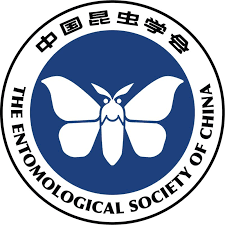Journal list menu
Export Citations
Contents
Issue Information
Review Article
Cellular and humoral immune interactions between Drosophila and its parasitoids
- Pages: 1208-1227
- First Published: 10 August 2020

-
Parasitoid infestation in Drosophila is counteracted by its multiple natural immune defense systems, including cellular and humoral immunity.
-
Cellular immune responses involve the proliferation, differentiation, migration and spreading of host hemocytes and parasitoid encapsulation by them.
-
Humoral immune responses rely more heavily on melanization and on the Toll, Imd and Jak/Stat immune pathways associated with antimicrobial peptides along with stress factors.
-
To achieve successful development, various virulence factors are introduced while laying eggs, among which venom and virus-like particles (VLPs) are the key players to counteract immune responses of host Drosophila.
Biotechnological interventions for the sustainable management of a global pest, whitefly (Bemisia tabaci)
- Pages: 1228-1252
- First Published: 22 July 2020

The present review highlights the recent advances along with pros and cons of key approaches like host-plant resistance, non-RNAi approaches (of developing transgenic plants via nuclear or chloroplast transformation), genetically modified organism (GMO)- and nontransgenic (GMO free)-RNAi, use of nanotechnology, mutagenesis and gene editing CRISPR/Cas strategy for whitefly Bemisia tabaci control. The challenges of improving the efficiency of RNAi and their biosafety issues are also discussed for sustainable food production.
Original Articles
A CCCH zinc finger gene regulates doublesex alternative splicing and male development in Bombyx mori
- Pages: 1253-1261
- First Published: 07 October 2020

CRISPR/Cas9-mediated Bmznf-2 mutagenesis lead to delayed larval development and diminished body size in silkworm males.
Bmznf-2-deficient males produce female-specific isoform of Bmdsx.
Adult external genitalia characteristics of the male moths in Bmznf-2 mutants develop a female-specific genital papilla, degraded penis and defective clasper.
Genome-wide identification and characterization of long non-coding RNAs in Tribolium castaneum
- Pages: 1262-1276
- First Published: 25 September 2020
An inducible constitutive expression system in Bombyx mori mediated by phiC31 integrase
- Pages: 1277-1289
- First Published: 16 August 2020

Graphical Abstract The present study reports a phiC31 integrase-mediated promoter flip system (FLIP) via the attB/attP exchange for the inducible expression of target genes in silkworms. Left inset illustrates the schematic of the FLIP system mediated by the phiC31 integrase-induced attB/attP exchange. Right inset shows this system activates the efficient and inducible expression of DsRed in a silkworm embryo-derived cell line BmE and silkworm individuals.
Molecular basis of the silkworm mutant rel causing red egg color and embryonic death
- Pages: 1290-1299
- First Published: 11 September 2020
An InR/mir-9a/NlUbx regulatory cascade regulates wing diphenism in brown planthoppers
- Pages: 1300-1313
- First Published: 16 September 2020

When the host plant nutritional status is not ideal for brown planthopper growth, the expression level of NlInR1 in the tergum of nymphs increased and NlInR2 decreased; this leads to a higher level of mir-9a, which in turn reduced the amount of NlUbx transcripts, ultimately resulting in longer wing lengths.
Roles of LmCDA1 and LmCDA2 in cuticle formation in the foregut and hindgut of Locusta migratoria
- Pages: 1314-1325
- First Published: 10 October 2020

We investigated the roles of LmCDA1 and LmCDA2 in the foregut and hindgut in locust. The results showed that LmCDA1 and LmCDA2 have distinct, but overlapping, functions in chitin organization in the foregut cuticle. However, in the hindgut, this process seems independent of LmCDA1 activity but requires LmCDA2 function.
Knockdown of specific cuticular proteins analogous to peritrophin 3 genes disrupt larval and ovarian development in Bactrocera dorsalis (Diptera: Tephritidae)
- Pages: 1326-1337
- First Published: 27 August 2020
Involvement of chemosensory proteins in host plant searching in the bird cherry-oat aphid
- Pages: 1338-1353
- First Published: 12 August 2020

In this study, we present evidence for the involvement of chemosensory proteins in host plants searching of Rhopalosiphum padi. Knockdown of CSP4, CSP5 or CSP6 can significantly affect host-location behavior of the aphid. Host plant volatiles (octanal, [E]-2-hexenol, and linalool) have significant attraction to winged adults of the species; knockdown of CSP4 or CSP5 can significantly decrease the attraction of octanal to winged adults.
Expression and functional characterization of odorant-binding protein genes in the endoparasitic wasp Cotesia vestalis
- Pages: 1354-1368
- First Published: 06 August 2020

Graphical Abstract
We discovered the presence of 20 OBPs in the parasitic wasp, Cotesia vestalis. RNA interference successfully inhibited the mRNA expression of CvesOBP17/18/19, and in vivo behavioral tests showed that the OBP-deficient wasp lost some of their ability to locate host plants and hosts. In summary, our results demonstrated that CvesOBP17/18/19 are likely involved in parasitic processes of female wasps.
Identification of salivary proteins in the whitefly Bemisia tabaci by transcriptomic and LC–MS/MS analyses
- Pages: 1369-1381
- First Published: 05 August 2020
Development of two continuous hemocyte cell sublines in the Asian corn borer Ostrinia furnacalis and the identification of molecular markers for hemocytes
- Pages: 1382-1398
- First Published: 22 July 2020

Two cell sublines (Gr and Pl) possess the morphological characteristics of granulocytes and plasmatocytes respectively were established, and they showed different behaviors in cellular immune reactions. Two Gr and three Pl specifically expressed genes were identified by comparative analysis of their transcriptomes and RT-PCR and qPCR.
Steroid hormone 20-hydroxyecdysone promotes CTL1-mediated cellular immunity in Helicoverpa armigera
- Pages: 1399-1413
- First Published: 16 July 2020

A proposed model for the induction of HaCTL1 upon 20E signaling, thereby promoting cellular immunity. 20E-HaEcR-HaUSP complex induces the expression of HaCTL1 in hemocytes, followed by the secretion of HaCTL1 into the hemocoel. HaCTL1 then recognizes pathogens (such as parasitic nematodes and bacteria) and interacts with the unknown hemocytic receptor, which then activates cellular immune reactions such as encapsulation and phagocytosis.
CRISPR/Cas9-based knockout reveals that the clock gene timeless is indispensable for regulating circadian behavioral rhythms in Bombyx mori
- Pages: 1414-1425
- First Published: 23 August 2020

Circadian rhythms, which are ubiquitous and adaptive, occur across all species, from microbes to humans, in which they organize and modify behavior and physiology. timeless (tim) is a canonical clock gene. The core composition of the Drosophila melanogaster endogenous circadian clock has been extensively investigated; however, in lepidopteran insects, including Bombyx mori, the mechanism is complicated and little is known regarding the participation of tim in the negative feedback loop responsible for behavioral activities. To arrive at a comprehensive understanding of the role of tim in the B. mori endogenous circadian clock, we exploited the clustered regularly interspaced short palindromic repeats (CRISPR)/CRISPR-associated protein 9 gene editing system.
Transcription factor CncC potentially regulates the expression of multiple detoxification genes that mediate indoxacarb resistance in Spodoptera litura
- Pages: 1426-1438
- First Published: 04 August 2020

The structure of SlituCncC was obtained and analyzed in S. litura. Specific expression showed that SlituCncC was overexpressed and more inducible when treated with indoxacarb in InRS compared with SS. In addition, RNAi, RNA sequencing, qPCR analysis, and CncC–Maf binding site prediction demonstrated that SlituCncC may regulate the expression of multiple detoxification genes that mediate indoxacarb resistance in S. litura.
Susceptibility and interactions between Aedes mosquitoes and Zika viruses
- Pages: 1439-1451
- First Published: 29 July 2020
Novel strategies for the biocontrol of noctuid pests (Lepidoptera) based on improving ascovirus infectivity using Bacillus thuringiensis
- Pages: 1452-1467
- First Published: 05 October 2020

Highlights
1. The per os infectivity of ascovirus was improved using Bacillus thuringiensis var. kurstaki.
2. Generally, three types of competition were found between ascovirus and Btk.
3. Btk/ascovirus combinations had obvious oral infectivity of Spodoptera litura and Mythimna separata larvae.
4. The results provided possible strategies on biocontrol of noctuid pests
Only mothers feed mature offspring in European Ceratina bees
- Pages: 1468-1481
- First Published: 29 July 2020
Decline of Eulia ministrana (Lepidoptera: Tortricidae) in polluted habitats is not accompanied by phenotypic stress responses
- Pages: 1482-1490
- First Published: 11 August 2020

The population density of a leafrolling moth Eulia ministrana decreased 10 fold with a 15 fold increase in environmental pollution, but this decline was not accompanied by the expected changes in the studied morphological stress indices: size, forewing melanization and fluctuating asymmetry in wing venation. Thus, insect populations can decline in polluted habitats without any visible signs of stress.
Domestication-related changes in sexual performance of Queensland fruit fly
- Pages: 1491-1503
- First Published: 23 September 2020

In Sterile Insect Technique (SIT) programs, massive numbers of insects are reared, sterilized, and released in the field to impede reproduction of pest populations. The domestication and rearing processes used to produce insects for SIT programs may have significant evolutionary impacts on life history and reproductive biology. We assessed the effects of domestication on sexual performance of laboratory reared Queensland fruit fly, Bactrocera tryoni, by comparing an old (49 generations) and a young colony (5 generations). We evaluated mating propensity, mating latency, copula duration, sperm transfer, and ability to induce sexual inhibition in mates. Overall, both males and females from the old colony had greater mating propensity than those from the young colony. Copula duration was longer when females were from the old colony. There was no evidence of sexual isolation between the colonies as males and females from the two colonies had similar propensity to mate with flies from either colony. Males from the old colony transferred more sperm regardless of which colony their mate was from. Finally, males from both colonies were similarly able to induce sexual inhibition in their mates and were also similarly able to secure copulations with already-mated females. Positive effects of domestication on sperm transfer, coupled with maintained ability to induce sexual inhibition in mates and to secure copulations with previously mated females, highlights that domestication may have little effect, or even positive effects, on some aspects of sexual performance that may advantage mass-reared B. tryoni in SIT programs.
Letter to the Editor
CRISPR/Cas9-based functional analysis of yellow gene in the diamondback moth, Plutella xylostella
- Pages: 1504-1509
- First Published: 07 September 2020

We identified a gene of pigmentation (yellow) in P. xylostella, Pxyellow, and performed a clustered regularly interspersed palindromic repeats (CRISPR)/CRISPR-associated protein 9 (Cas9)-mediated knockout experiment to verify that Pxyellow plays an essential role in the body pigmentation without being directly involved in regulation of growth, development, and reproduction. Such findings prove the effectiveness of Pxyellow as a screening marker for genetically based pest control techniques.















